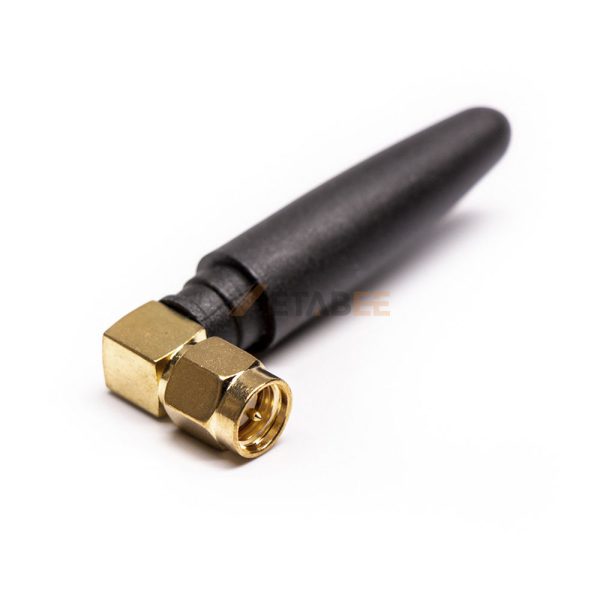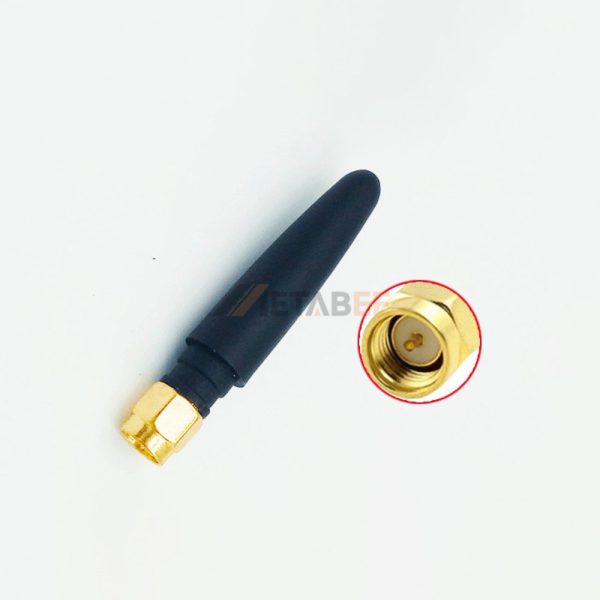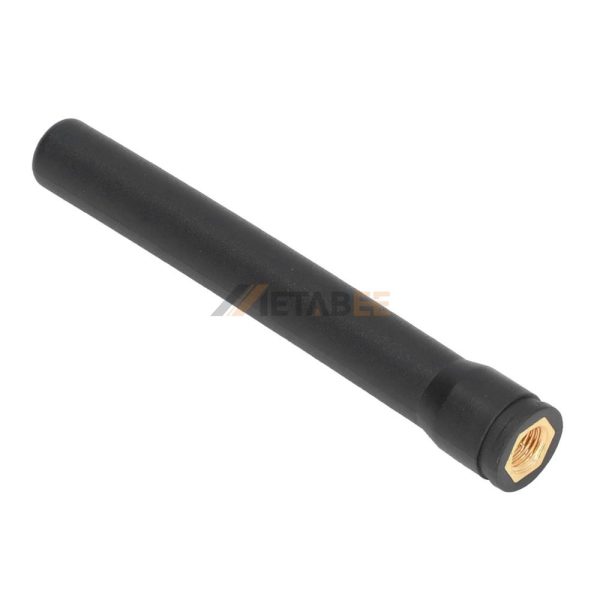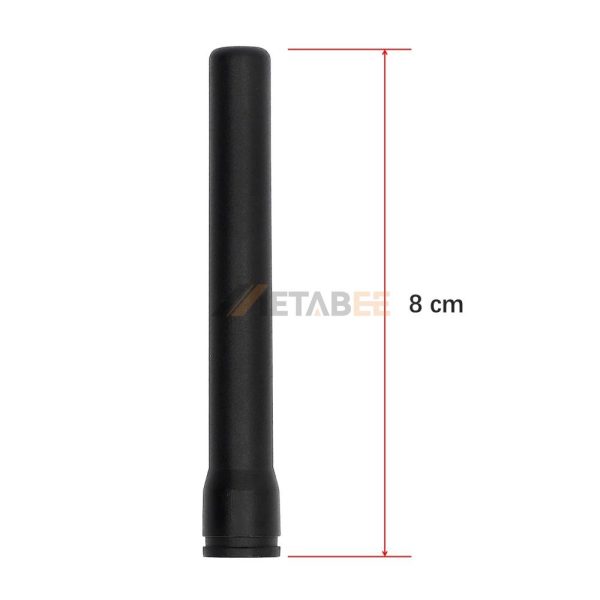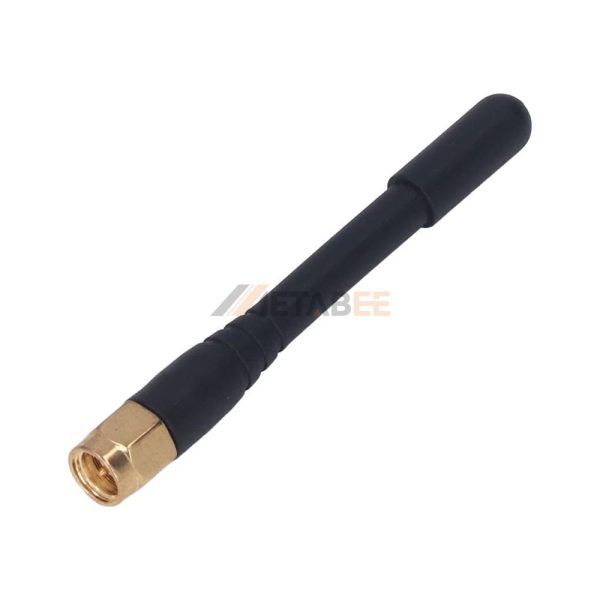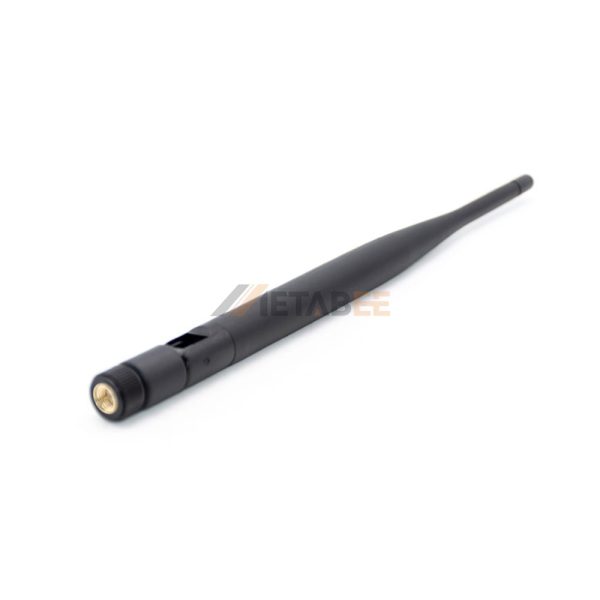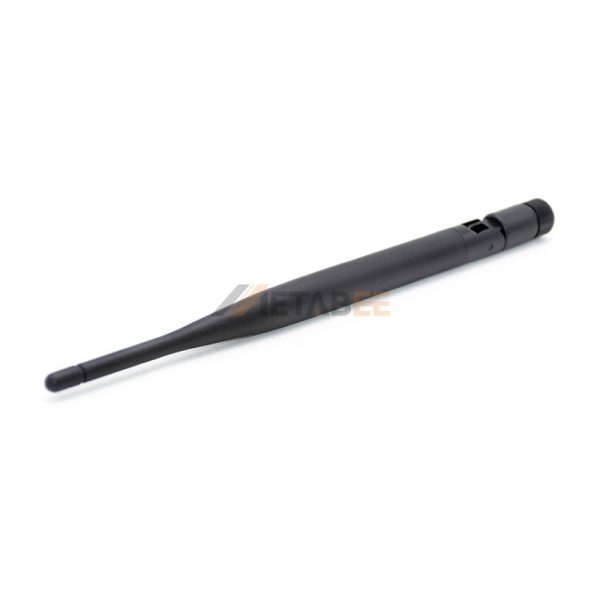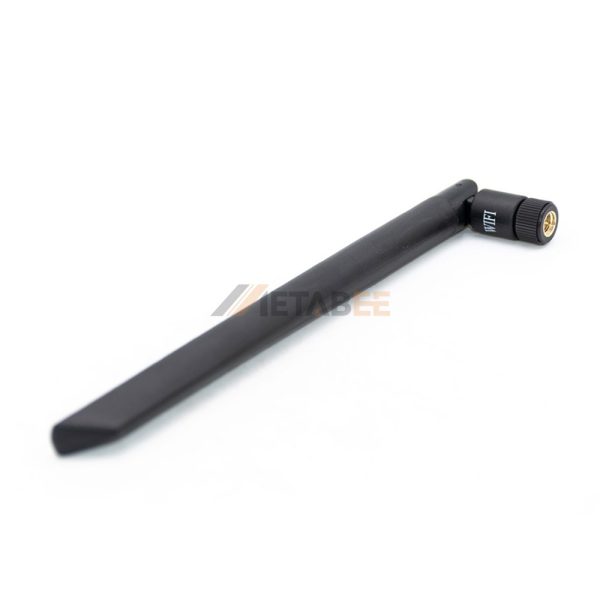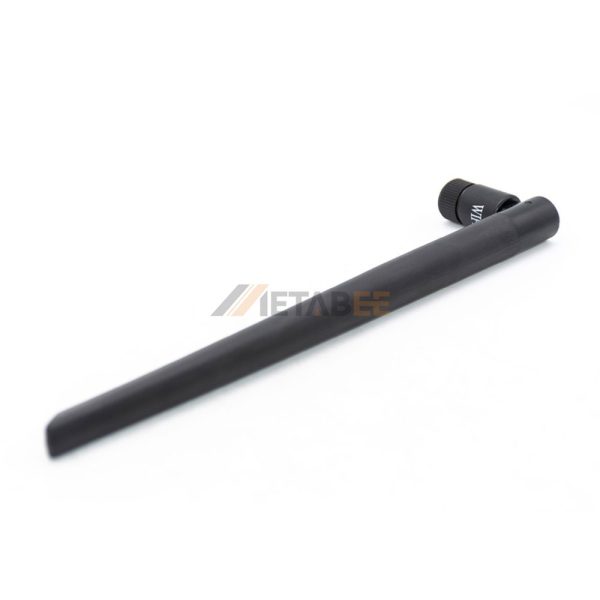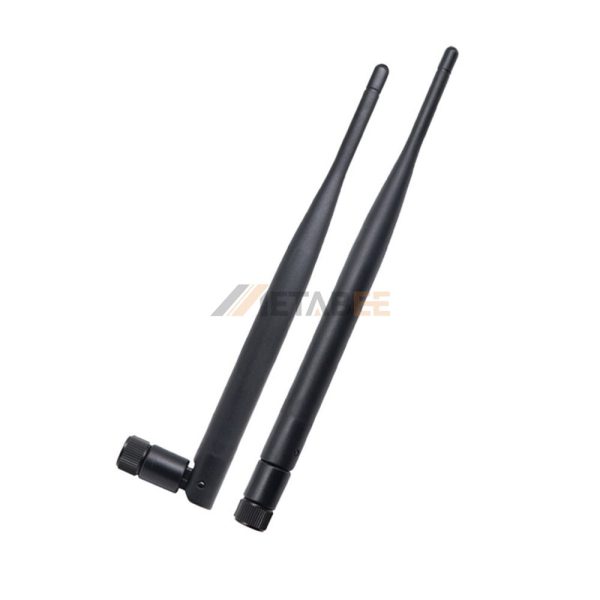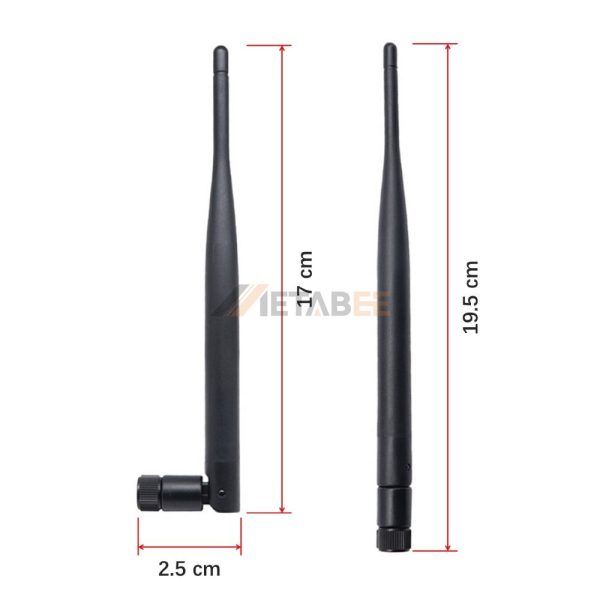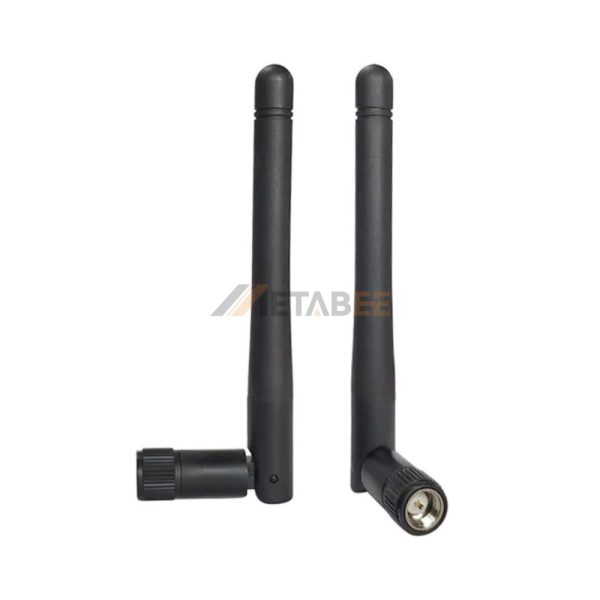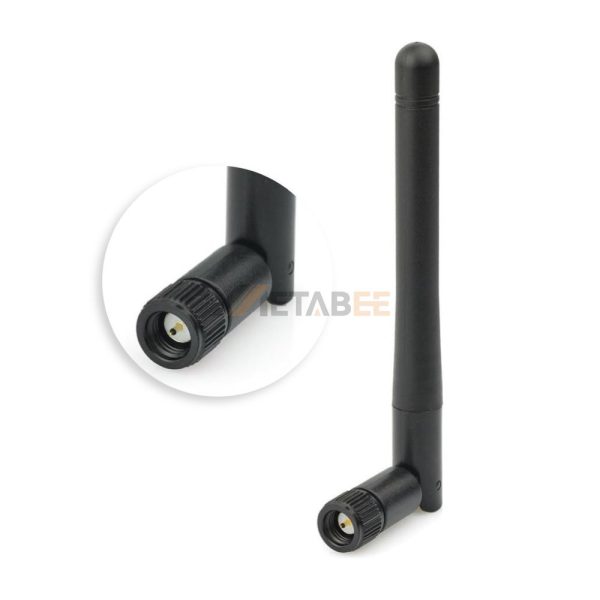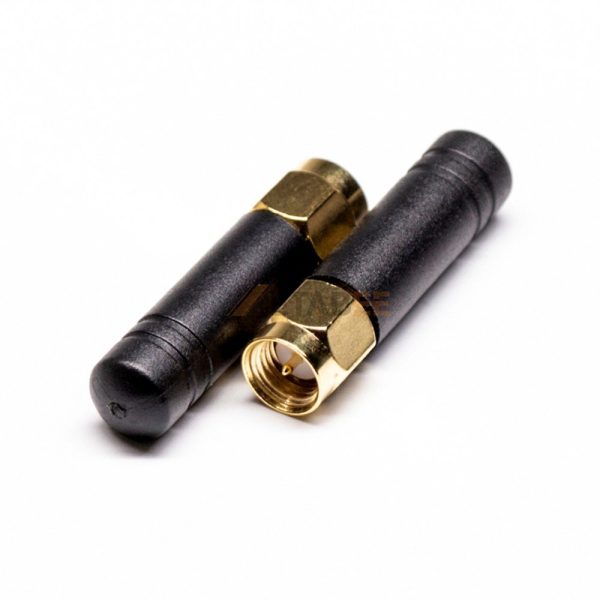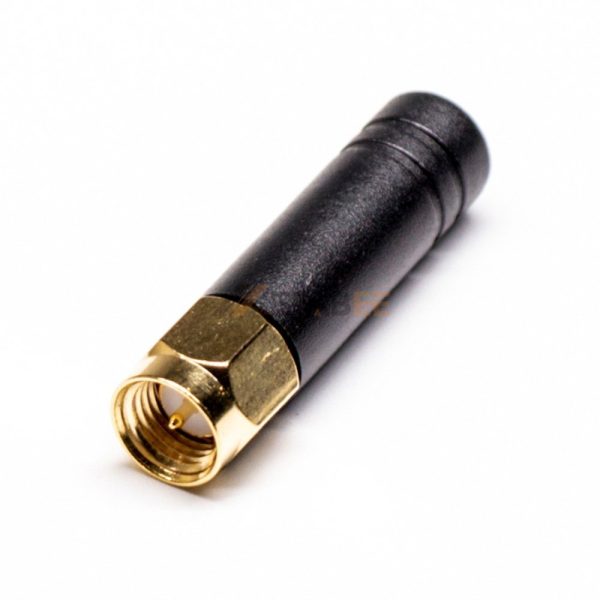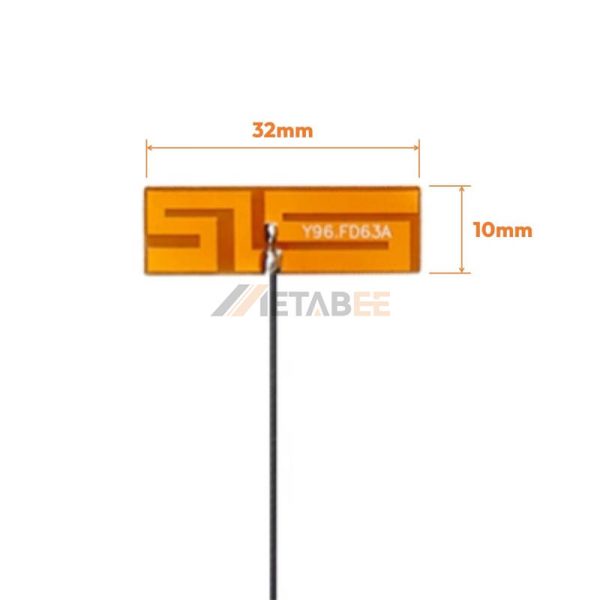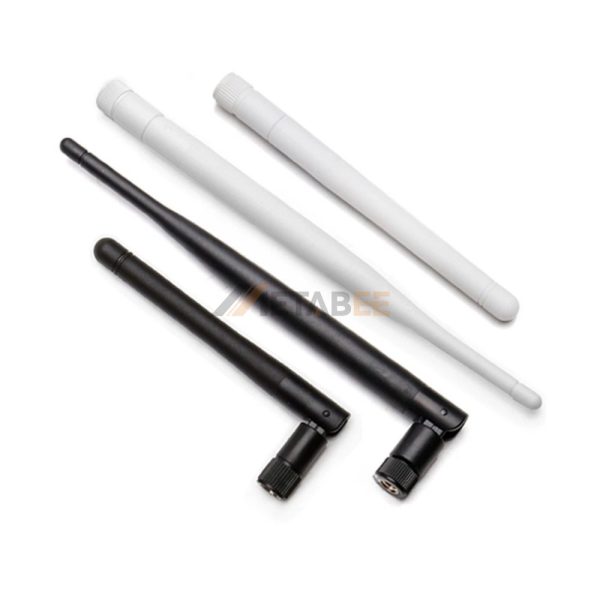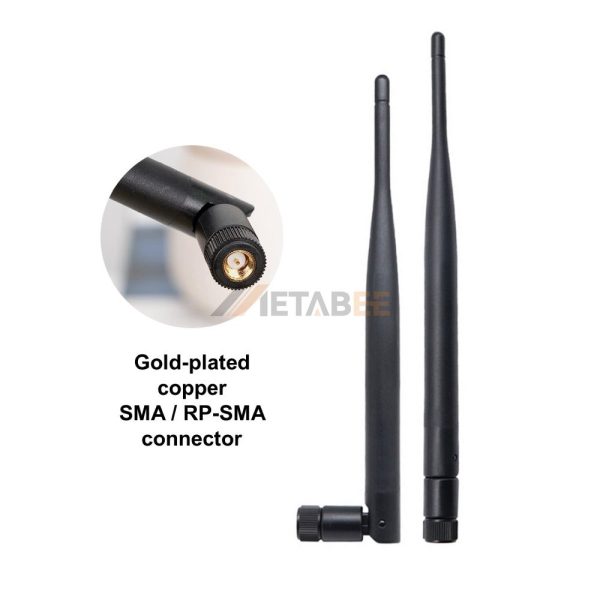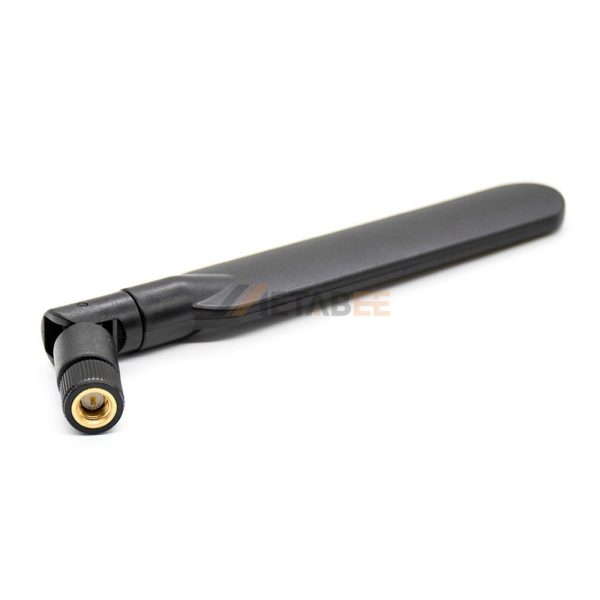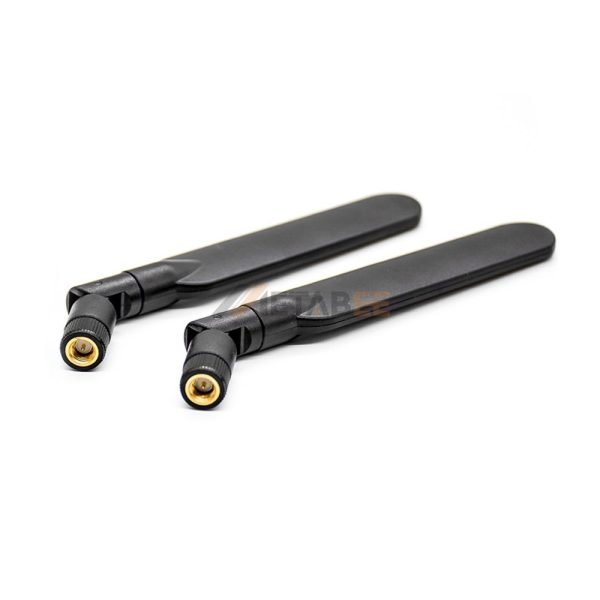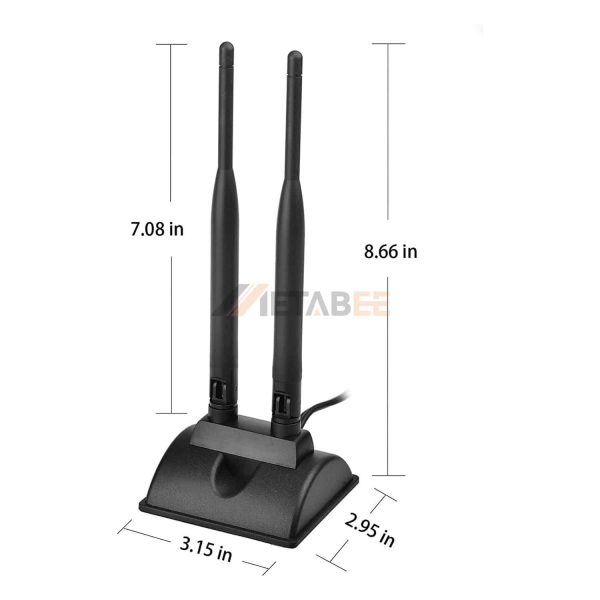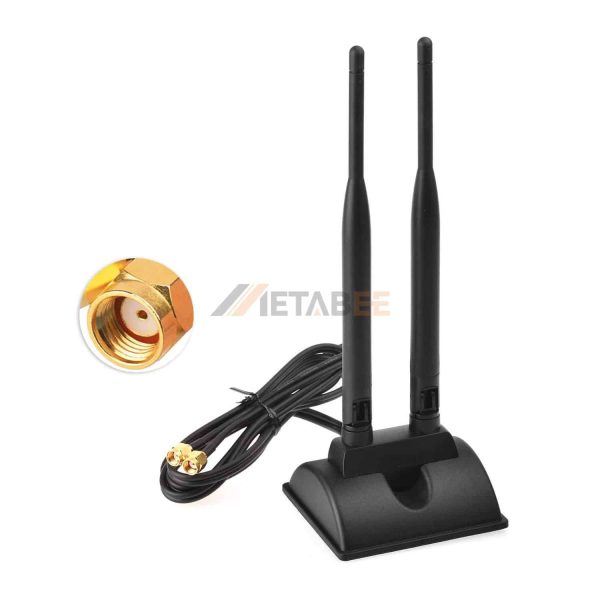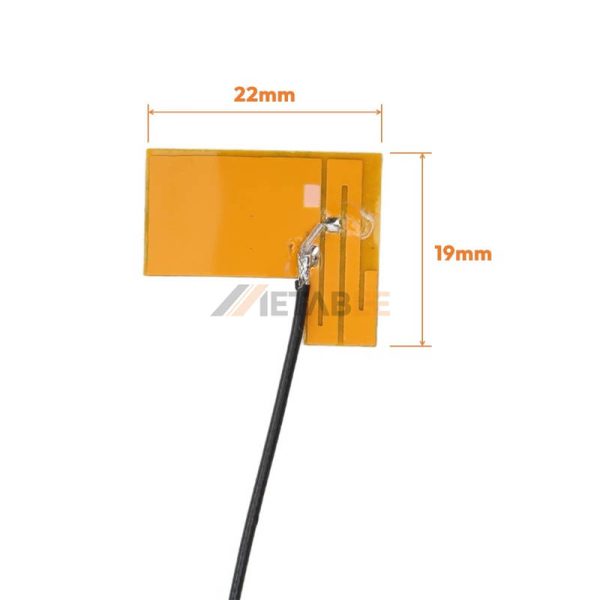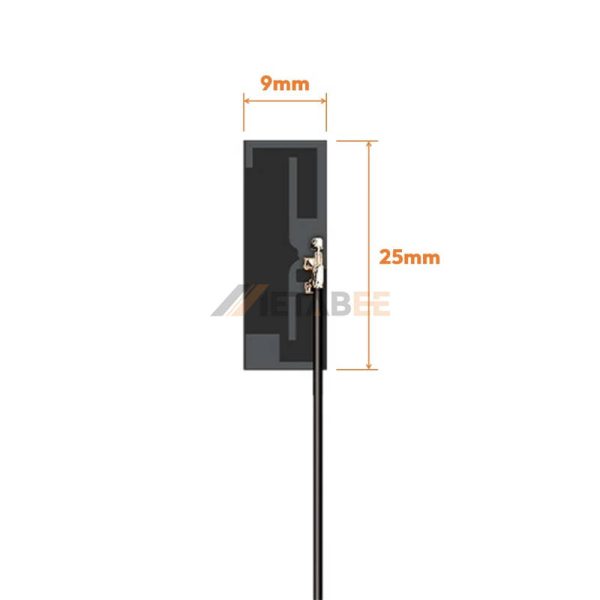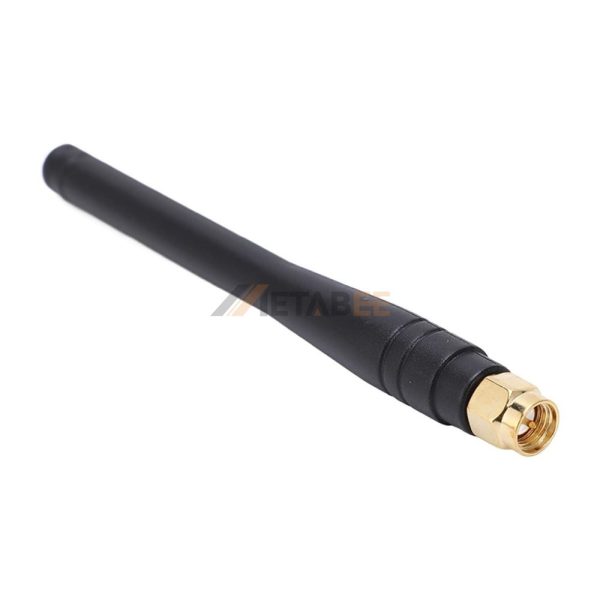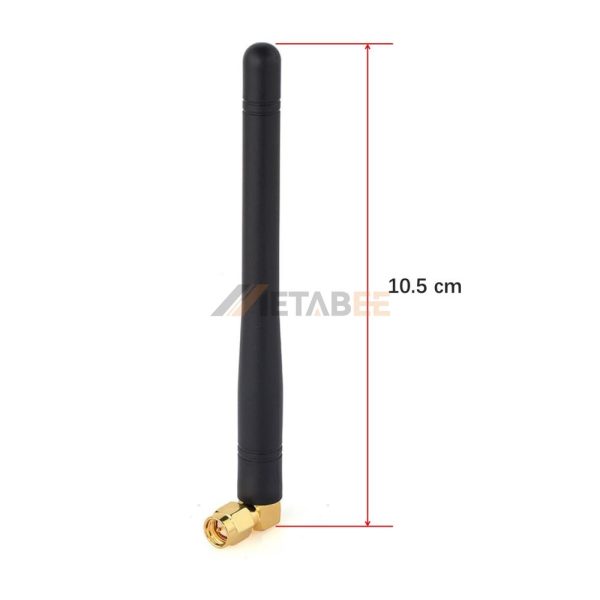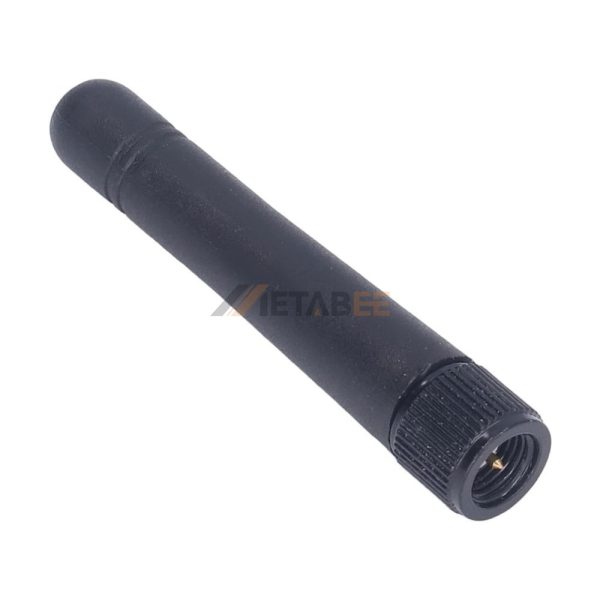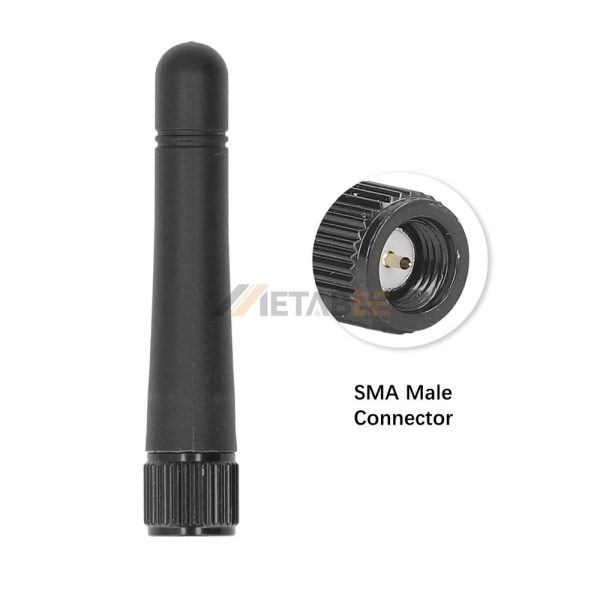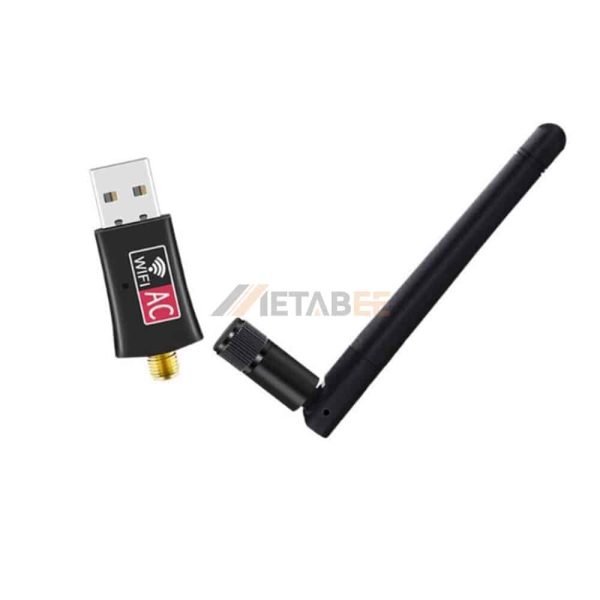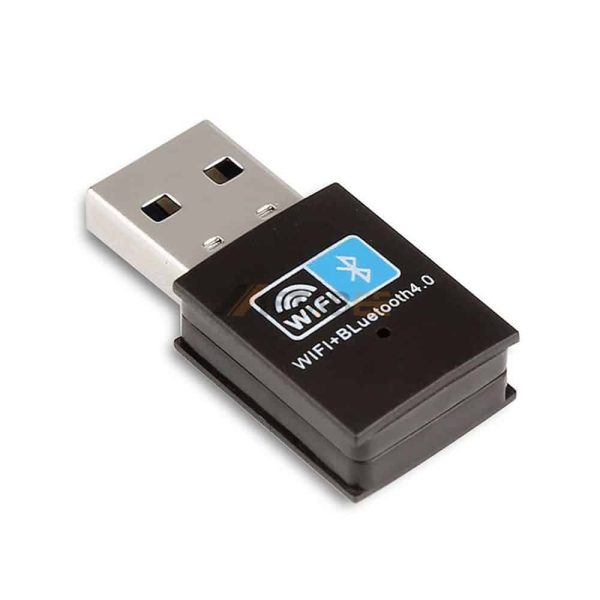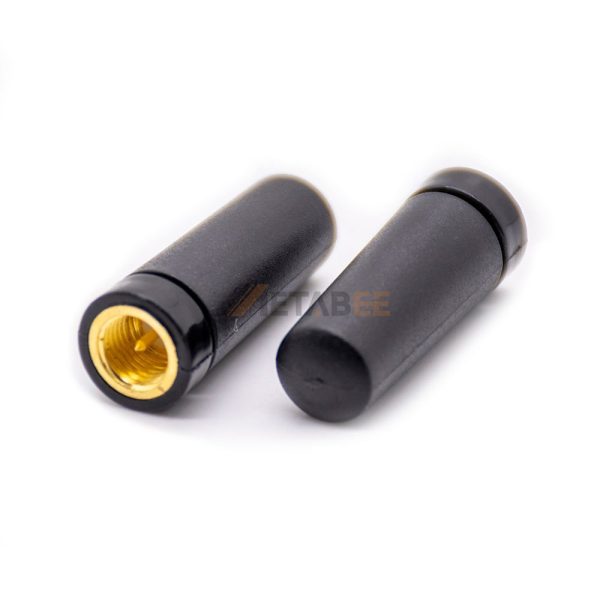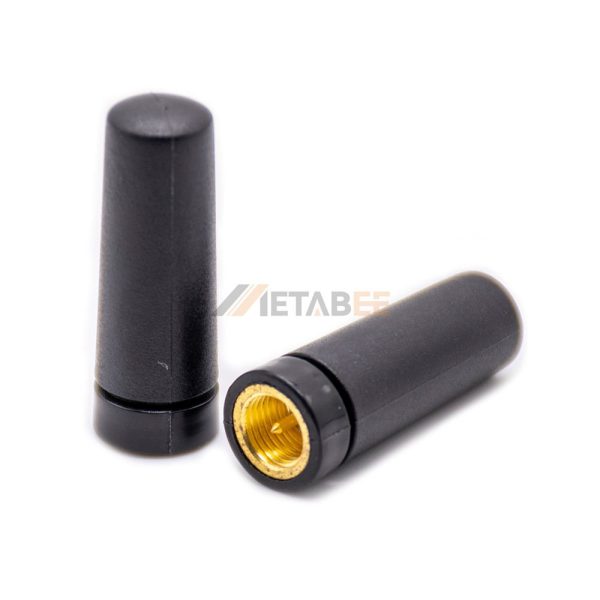Best WiFi Antennas: 2.4 GHz, 5.8 GHz, Dual Band
WiFi antennas are critical to ensuring reliable WiFi connections. It’s very important to choose the correct WiFi antenna. With our antennas, you can extend your WiFi coverage range and improve signal strength. These antennas will improve the performance of your wireless network.
We can supply you with a variety of WiFi antennas. Such as dual-band WiFi antennas, 2.4 GHz WiFi antennas, 5.8 GHz WiFi Antennas, and omni directional Antennas.
Explore this category of high-performance WiFi antennas. You’ll make informed choices and optimize your wireless experience.
WiFi Antenna FAQs
A WiFi antenna is a component that allows wireless signals to be transmitted and received in a WiFi network. It's an important part of all WiFi networks. It can establish wireless connections between devices like computers, smartphones, tablets, and routers.
WiFi antennas work on electromagnetic principles. They can convert electrical signals into radio waves and vice versa.
The primary role of a WiFi antenna is to increase the range and coverage of a wireless network. It accomplishes this by capturing radio frequency signals and transferring them with enhanced power. By using our antennas, you can get improved Wi-Fi signal reception and transmission between devices and the WiFi router.
You can use our antenna to extend the reach of your WiFi network to cover larger areas. Besides, our antennas will help you improve signal strength in weak signal areas. Finally, you can use these antennas to overcome obstacles that may limit wireless communication.
WiFi antennas come in a variety of types and sizes to fit a variety of applications and conditions. Based on radiation patterns, we can categorize them as omni-directional or directional antennas.
- Omni Directional Antennas.
Omni-directional WiFi antennas broadcast signals in all directions, providing a 360-degree coverage pattern. They can give the same signal strength in all directions. So, they are appropriate for circumstances in which devices are distributed throughout an area.
Omni-directional antennas are often used in homes, small companies, and cafes. We can also use them in public areas where several devices need consistent WiFi access.
- Directional Antennas.
Directional WiFi antennas focus their signal in a certain direction. They can increase range and signal strength in that direction. These antennas are designed to broadcast and receive signals in a focused beam. So, it will enable long-range connections and point-to-point communication.
There are many outdoor applications for directional antennas. For example, you can use these antennas to link remote buildings. Or you can use them to extend WiFi coverage to outdoor areas. Besides, you can establish a wireless system over longer distances with these antennas.
We can also categorize WiFi antennas by frequency. There are three main categories: 2.4 GHz WiFi antennas, 5.8 GHz WiFi antennas, and dual-band WiFi antennas.
- 4 GHz WiFi Antennas
2.4 GHz WiFi antennas operate in the 2.4 GHz frequency range. It's a popular frequency band for WiFi networks. These antennas are compatible with most conventional routers and WiFi-enabled devices.
When compared to higher frequency bands, this band has many advantages. For example, they can provide improved signal penetration through obstacles and broader coverage.
- 8 GHz WiFi Antennas
5.8GHz WiFi antennas operate on the 5.8 GHz frequency band. This frequency band is less crowded than the 2.4 GHz band. And it provides faster data transfer speeds.
These antennas are appropriate for locations with high wireless interference. They are also suitable for WiFi networks that are overcrowded. They can enable faster and more consistent connections. But they have a slightly shorter range than 2.4 GHz antennas.
- Dual-band WiFi antennas
Dual-band Wi-Fi antennas cover both the 2.4 GHz and 5.8 GHz frequency bands, enabling simultaneous operation on both. These antennas provide versatility and compatibility with dual-band WiFi routers and devices. They offer the benefit of using the less crowded 5.8 GHz band for faster data transfer. At the same time, it's compatible with devices that only support the 2.4 GHz range.
No. We have designed these WiFi antennas to work with standard wireless routers and access points. But it's crucial to ensure compatibility in terms of connector type, frequency range, and other specifications. You can contact us to verify compatibility.
The range of a WiFi antenna depends on several factors. These factors include its gain, the router's broadcast power, and the surrounding environment. While the specifications of the antenna can provide an estimate, the actual range can vary. Obstacles, interference, and signal degradation over distance can all reduce the antenna's effective range.
You should consider several factors while choosing a WiFi antenna:
- Frequency Compatibility. Ensure that the antenna supports the frequency bands used by your wireless network (e.g., 2.4 GHz or 5 GHz).
- Gain and Range. Consider the antenna's gain, which determines signal strength and the range it can cover effectively.
- Connector Type. Check the connector compatibility between the antenna and your router or device (e.g., SMA connectors, RP-SMA, N-Type).
- Mounting Options. Check the available mounting options. And choose one that suits your installation requirements (e.g., wall mount, pole mount).
- Compatibility with Devices and Standards. Verify that the antenna is compatible with your existing devices and WiFi standards.
Yes. We have an experienced design team that can provide you with custom antenna designs. Please contact us right away for further information!
A dependable and high-performing WiFi network is critical for seamless connections. WiFi antennas are critical for almost all WiFi networks. They can increase signal strength, expand coverage range, and optimize wireless performance.
MetabeeAI is a reputable antenna manufacturer based in China. We offer the best WiFi antennas as well as other antennas. Besides, we can provide professional antenna design services. Our engineers can design antennas based on your specific needs, such as antenna size, connector, frequency, cable length, and so on.
- Uncompromising Quality
MetabeeAI is well-known for its commitment to providing high-quality products. We manufacture these WiFi antennas with precision. And they are subjected to strict quality control standards. You can feel confident in the reliability, durability, and longevity of our antennas if you choose us.
- Wide Range of Options
MetabeeAI provides a wide range of WiFi antennas to meet a variety of demands and conditions. Whether you require antennas for residential, commercial, or outdoor applications, we have you covered. We provide 2.4GHz, 5.8GHz, and dual-band antennas, assuring compatibility with a wide range of routers and devices.
- Rigorous Testing and certification
All our antennas undergo rigorous testing to ensure that they meet industry requirements and certifications. We have extensively tested our antennas for performance, durability, and reliability. So, you will obtain a high-quality antenna that fulfills your requirements.
- Expert Guidance and Support
We take pride in providing excellent customer service. Our team of experts is dedicated to assisting customers throughout their purchasing journey. For example, you can contact us when you choose the correct antenna. We are also here to assist when you need technical assistance during installation and troubleshooting.
- Competitive Pricing
We understand the value of being affordable without compromising quality. MetabeeAI provides exceptional value for money with reasonable pricing on all antennas. You can be confident that you're getting an excellent product at a reasonable price.
- Positive Customer feedback
MetabeeAI has a reputation for excellent customer service and great comments. Many customers have praised our WiFi antennas for their reliability, ease of installation, and significant improvement in WiFi signal strength.
